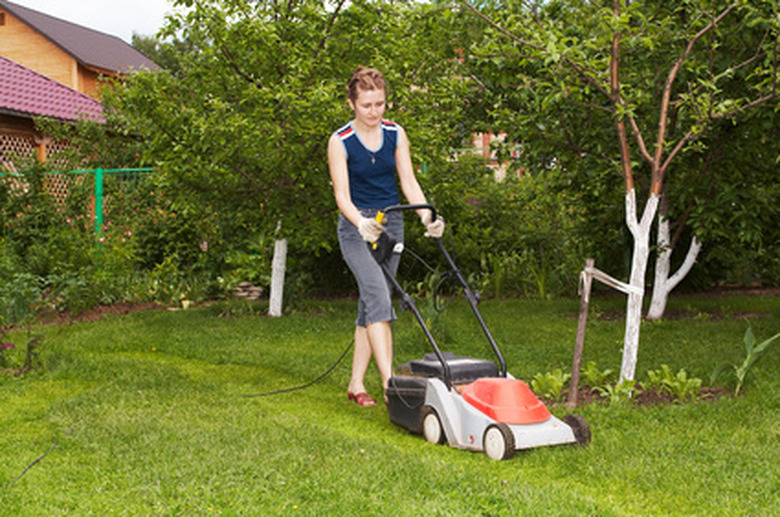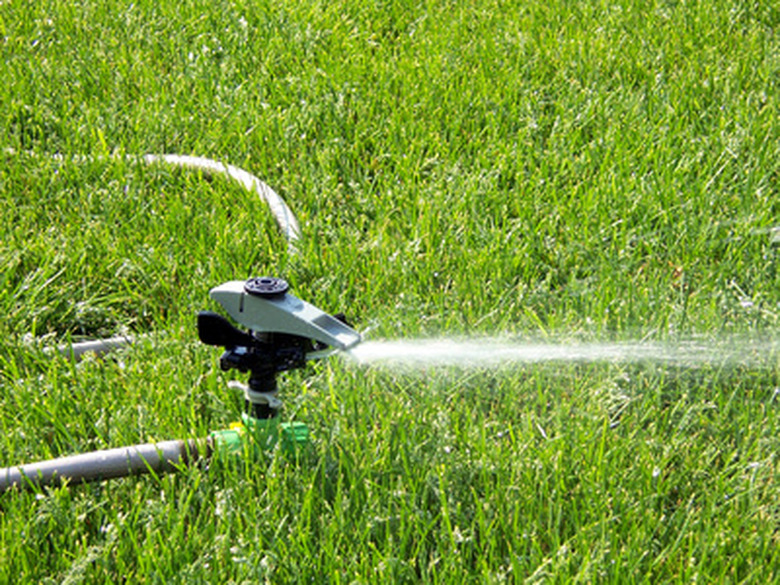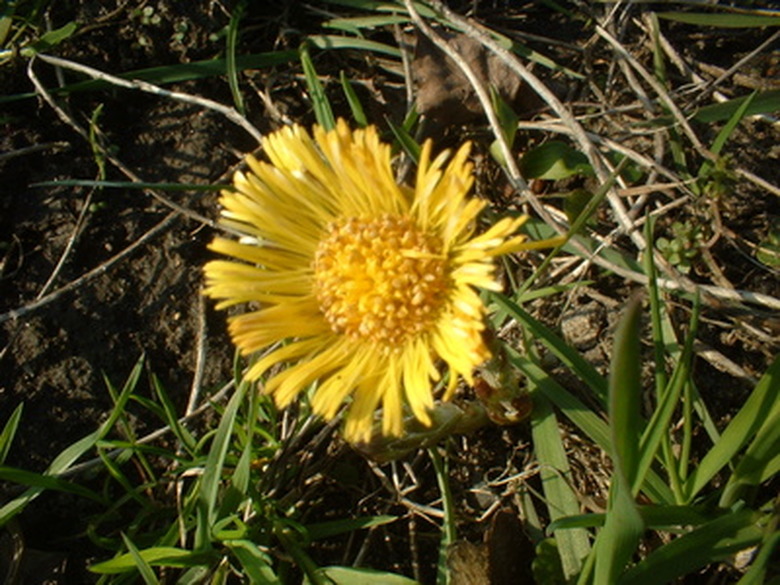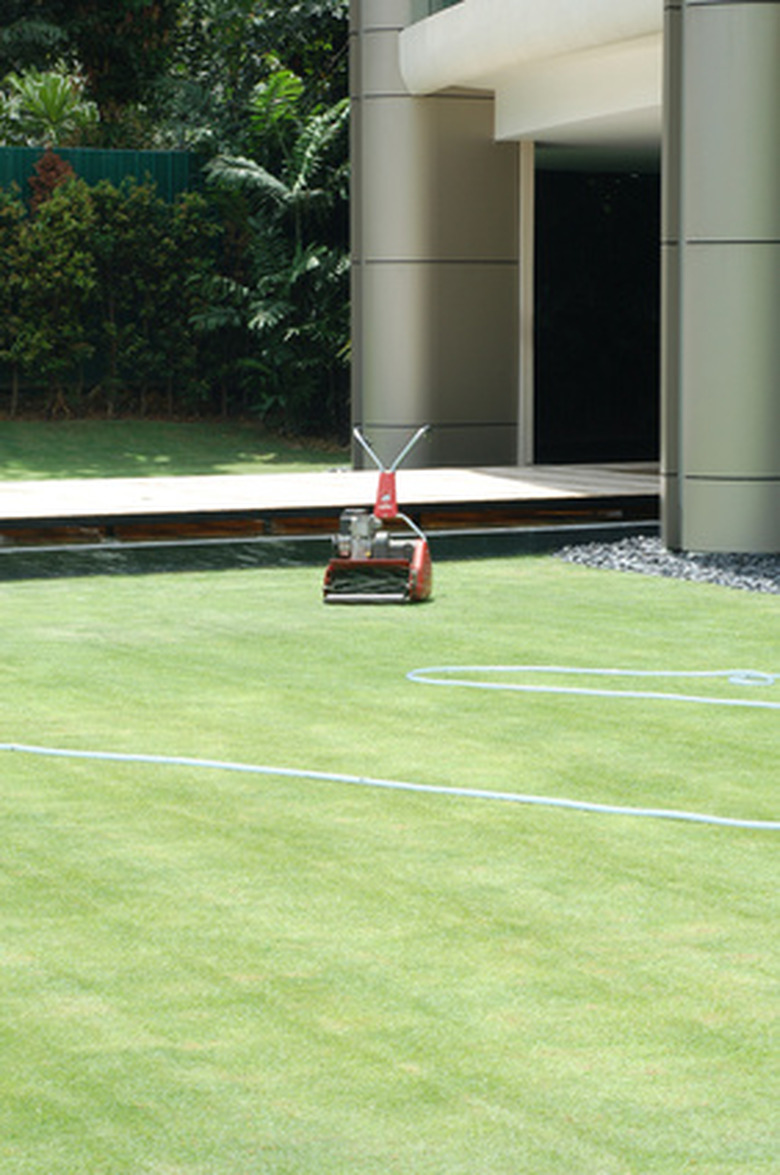Middle Tennessee Lawn Care Tips
Most lawns in Middle Tennessee are predominantly blends of tall fescue, a cool season turfgrass that, with proper care, will remain green and lush year-round. Most landscape managers and home gardeners work to free fescue lawns from everything else: pests, weeds and other types of grass.
Assuming the turf is established, and a certain amount of chemical practices are acceptable, great lawn care is not out of reach. To keep a healthy, green fescue lawn in Middle Tennessee, understand four basic aspects of turf management.
Mowing
Beginning in late March, get the grass blades used to growing at the height you want them to be. Start by making sure the mower blades are sharp. The University of Tennessee Extension Service recommends setting blade height to about 2 to 3 inches from the ground.
- Most lawns in Middle Tennessee are predominantly blends of tall fescue, a cool season turfgrass that, with proper care, will remain green and lush year-round.
- Beginning in late March, get the grass blades used to growing at the height you want them to be.
Mow in a back and forth pattern, to show off the ability of fescue grasses to reflect sunlight. Do this once per week through spring. As daytime temperatures rise through the summer, reduce mowing frequency if needed, and raise the mower deck to 4 or 5 inches to conserve moisture and nutrients.
Water Management
Most Middle Tennessee lawns get enough water from rain throughout the spring. Excessive irrigation will only invite disease problems. When summer heat begins to take its toll, begin a periodic watering routine in the morning hours. According to the University of Tennessee Extension Service, "A key to effective watering is to irrigate deeply, to a 4- to 6-inch soil depth, and infrequently. Actively growing fescues usually require from 1 to 1 1/2 inches of water each week."
- Mow in a back and forth pattern, to show off the ability of fescue grasses to reflect sunlight.
- As daytime temperatures rise through the summer, reduce mowing frequency if needed, and raise the mower deck to 4 or 5 inches to conserve moisture and nutrients.
If you have an automatic irrigation system, set each spray zone to water three times per week, 10 minutes at a time. Set rotor heads to run 20 minutes a piece.
Fertilization and Weed Control
Good mowing and water management practices will help to keep fungal diseases away from Middle Tennessee fescue lawns. Keep an eye out for discolorations in your turf, however, as these may be signs of disease problems. To prevent and control weeds, incorporate herbicides into your fertilization program.
Fertilize once in early spring and again late in the season with a high nitrogen, general lawn fertilizer containing both a pre-emergent and post-emergent weed control. This will rid the lawn of existing broadleaf weeds and prevent future crabgrass growth. Apply a low-nitrogen fertilizer in summer, combined with a post-emergent weed control. Do not use a crabgrass preventing herbicide, for it will hamper seeding efforts later on. Put down a winterizing fertilizer high in phosphorus in mid-November to promote root growth during the dormant months. Follow product label instructions properly with each application.
- If you have an automatic irrigation system, set each spray zone to water three times per week, 10 minutes at a time.
- Do not use a crabgrass preventing herbicide, for it will hamper seeding efforts later on.
Aerating and Overseeding
The hot summers of Middle Tennessee tend to thin out fescue lawns, while foot traffic and tree roots compact the soil and restrict air and water flow. Repair this by aerating and over-seeding the lawn in mid-October.
Unwanted Bermudagrass and other grass-weeds will soon turn brown and go dormant. Take the opportunity in mid-fall to kill these off. Spray patches with a non-selective liquid herbicide, such as Roundup. Use a walk-behind or tractor-pulled aerator to pull cores from the soil, back and forth, as in a mowing pattern.
Seed the lawn at a light rate, being careful to keep grass seed out of landscape beds. Follow with an application of a starter lawn fertilizer, generally containing only nitrogen. Keep the lawn watered until new grass blades begin to emerge.
- The hot summers of Middle Tennessee tend to thin out fescue lawns, while foot traffic and tree roots compact the soil and restrict air and water flow.
- Use a walk-behind or tractor-pulled aerator to pull cores from the soil, back and forth, as in a mowing pattern.




